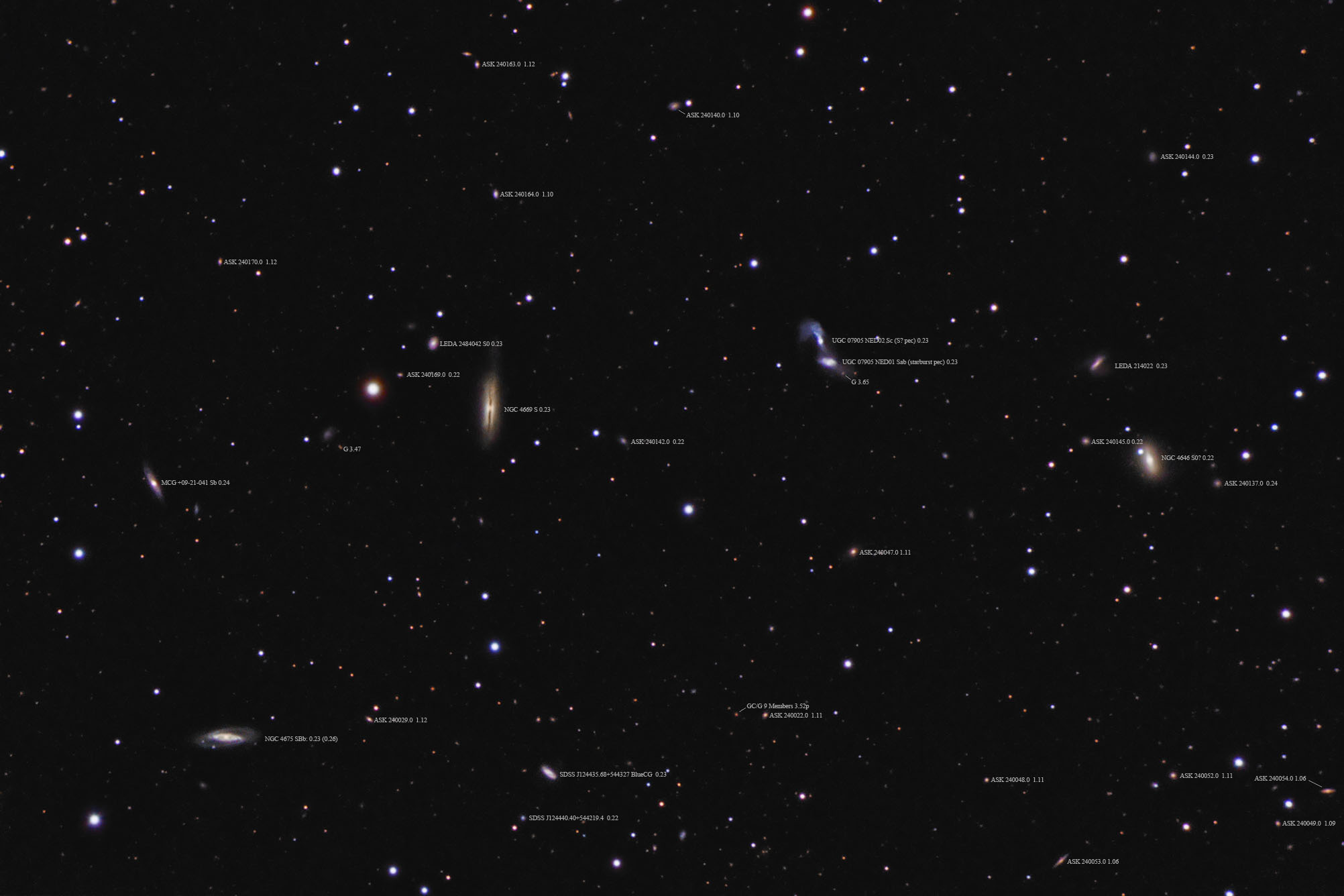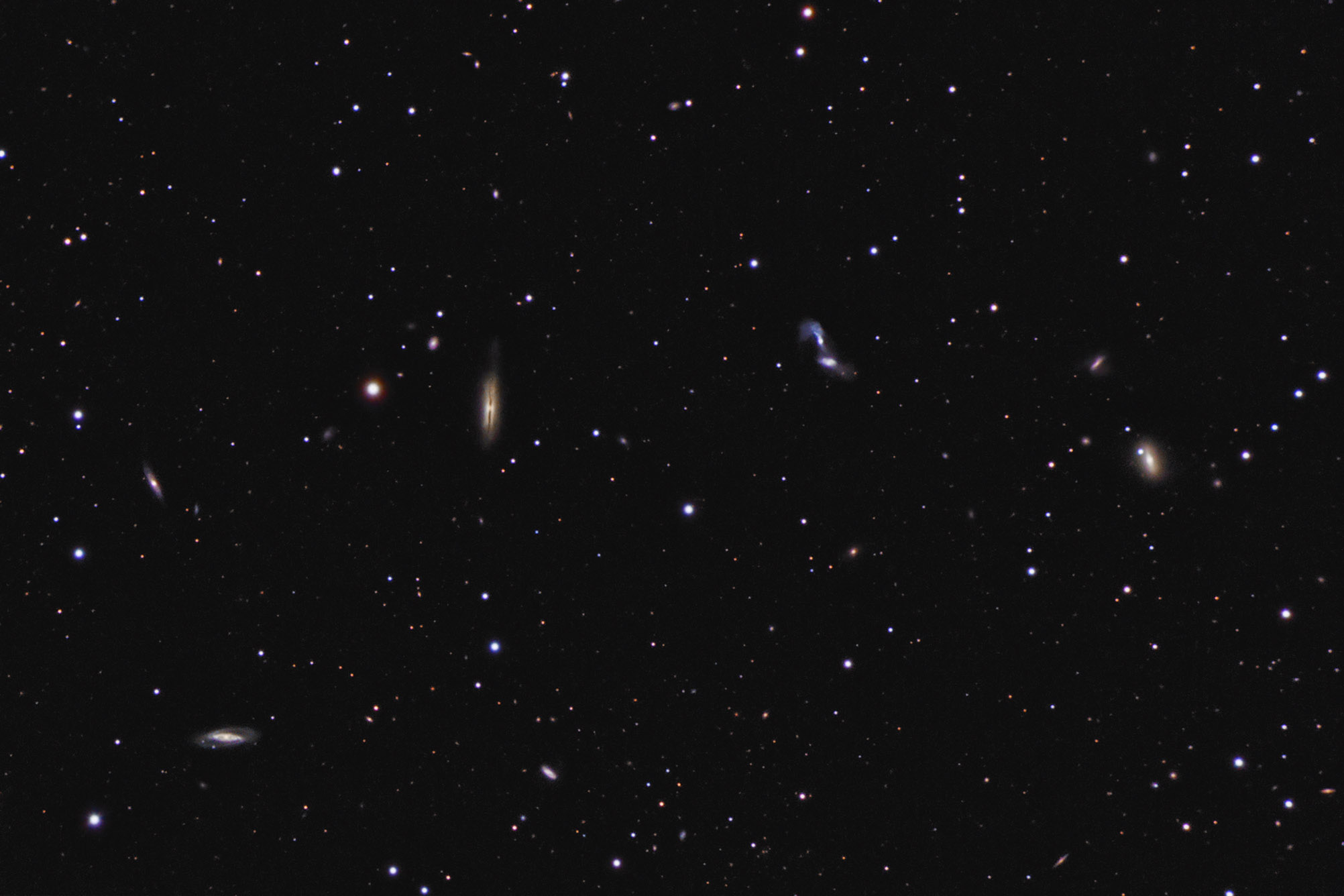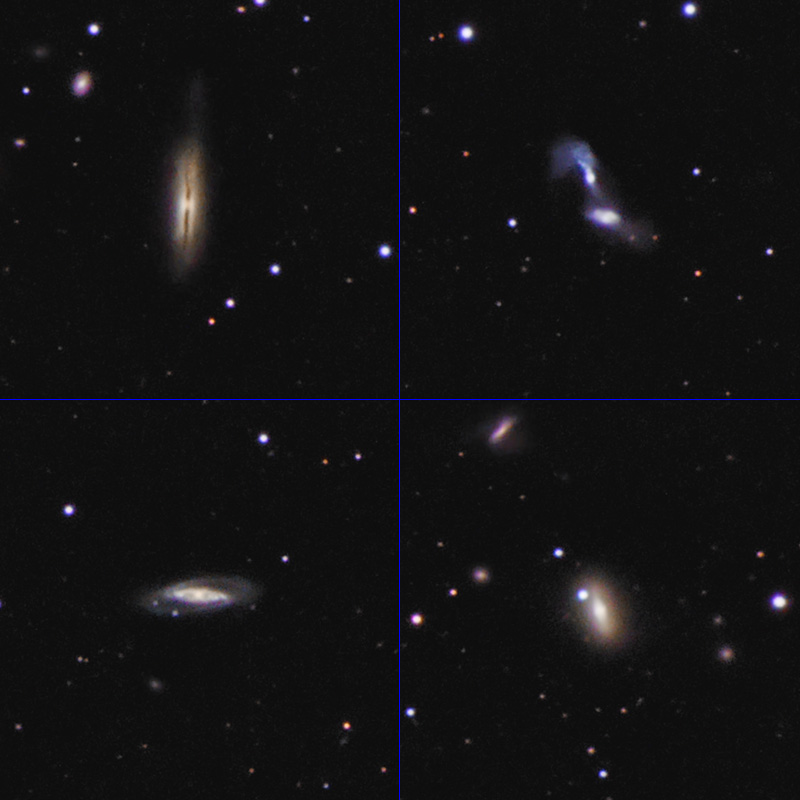| Description | Images |
Object name: NGC4669Designation(s): NGC4669, NGC4646, NGC4675, UGC07905, NGC 4669 is a huge edge on spiral galaxy in Ursa Major just under the handle of the Big Dipper that is about 230 million light-years distant. It is part of a group of galaxies at that distance. I couldn't find any designation for the entire group. Parts of it carried various names such as HDCE 0726, LDCE 0914 and HARO 32 Cluster. At first glance, NGC 4669 looks rather normal but its part north of the nucleus is about twice as long as its southern part even if you ignore the huge faint northern extension. Too bad we can't see it at a better angle to understand what is going on. Its full length is about 186,000 light-years making it one of the largest known spiral galaxies. Is that north part a plume from interaction with another galaxy? I found nothing on it which surprised me. Note also the dust lane to the south is normal but the lane to the north suddenly narrows and curves in a shallow arc first to the left then right. Very odd for a galaxy seen this close to perfectly edge on. It is likely related to the faint extension beyond it. Related Designation(s):2MASS J12425212+5451215, 2MASS J12453192+5444149, 2MASX J12425218+5451215, 2MASX J12444673+5452328, 2MASX J12453191+5444151, 2MASXi J1242521+545121, 2MASXi J1244467+545232, 2MASXi J1245319+544415, 2MFGC 10043, 2MFGC 10054, AKARI J1243480+545348, AKARI J1245321+544414, ASK 240025.0, ASK 240141.0, ASK 240167.0, CGCG 1240.6+5507, CGCG 1241.5+5510, CGCG 1242.5+5509, CGCG 1243.3+5500, CGCG 270-015, CGCG 270-016, CGCG 270-018, CGCG 270-019, CGPG 1241.5+5510, HARO 32, HARO 32:[D70a] E, HARO 32:[D70a] F, HARO 32:[D70a] G, HDCE 0726 NED002, HDCE 0726 NED003, HDCE 0726 NED004, HOLM 452, I Zw 041, IRAS 12415+5510, IRAS 12432+5500, IRAS F12405+5507, IRAS F12415+5510, IRAS F12432+5500, KPG 354, LDCE 0914 NED002, LDCE 0914 NED004, LDCE 0914 NED005, LGG 300:[G93] 002, LGG 300:[G93] 010, MCG +09-21-031, MCG +09-21-038, MCG +09-21-039, NGC 4646, NGC 4669, NGC 4675, NGC4646, NGC4669, NGC4675, NSA 042698, NSA 042729, NSA 162293, NVSS J124532+544415, PGC 042740, PGC 042942, PGC 042998, SDSS J124252.11+545121.6, SDSS J124252.11+545121.8, SDSS J124252.12+545121.5, SDSS J124252.12+545121.6, SDSS J124446.53+545233.2, SDSS J124446.54+545233.2, SDSS J124446.54+545233.3, SDSS J124446.97+545232.8, SDSS J124531.88+544415.3, SDSS J124531.88+544415.4, SDSS J124531.89+544415.4, SDSS J124531.89+544415.5, SSTSL2 J124531.92+544415.1, UGC 07892, UGC 07905, UGC 07925, UGC 07935, UGC07905, UZC J124252.2+545122, UZC J124446.8+545233, UZC J124531.9+544415, VV 708, [DZ2015] 805-02, [DZ2015] 805-03, [LG2007] 48, [LG2007] 50, [M98j] 180 NED01, [M98j] 180 NED02, [RC2] A1241+55, [TCW2007] 132, [TTL2012] 257811, [TTL2012] 259066, [TTL2012] 259089, | Permanent link: https://images.mantrapskies.com/catalog/NGC/NGC4669-NGC4646-NGC4675-UGC07905/NGC4669L4X10RGB2X10R-ID.JPG |


